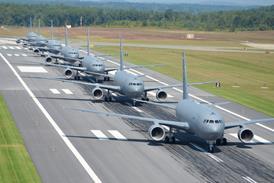STEWART PENNEY / LONDON
Specification yet to be finalised as infantry and aviation seek to settle differences
US Army in-fighting along with disputes with other US services may eliminate the possibility of developing a single Common Missile anti-armour weapon.
Industry sources say a user requirements document, containing the final specification, is overdue primarily as a result of differences between the infantry and army aviation.
The Common Missile is intended as a replacement for the Raytheon BGM-71 TOW and Lockheed Martin AGM-114 Hellfire anti-armour weapons. The former is a short-range wire-guided missile while the latter is longer range and can be equipped with either semi-active laser or millimetre wave (MMW)radar seekers.
Questions have also arisen as to whether the missile will meet the requirements of the US Navy and Marine Corps, and the UK, all of which could join the development programme. The US Army is expected to buy 73,000 missiles while the USMC, USN and UK forces could order another 27,000.
The UK has a draft memorandum of agreement (MoA) with the USA to join the programme, which was due to be signed in March, but is not now expected to be signed until late this year at the earliest.
Issues include the seeker and systems integration work. "The helicopter operators require more advanced technologies than the infantry. The challenge is to find a 'common' missile," says a source.
Observers on both sides of the Atlantic suggest the missile is more likely to use common modules rather than be a single weapon. "The infantry don't want MMW, therefore we need [single spectrum] sensors and processing that are then fused together," says a source.
There are also questions of missile range, with the ground forces seeking something with a 5-8km (3-4nm) range while the helicopter operators want around 15km range. Other questions include adapting the missile for fixed-wing aircraft. The latter requires a strengthened - and therefore heavier - airframe to manage the loads from aircraft manoeuvring.
The missile will also need to match the TOW's 150mm (6in) diameter, allowing the use of the same firing posts and to meet the internal carriage requirements of the Boeing-Sikorsky RAH-66 Comanche helicopter. Hellfire is a 170mm diameter missile.
A Boeing-Northrop Grumman team, Lockheed Martin and Raytheon received preliminary design and risk reduction contracts earlier this year. The pan-European missile company MBDA is discussing non-exclusive teaming arrangements with Boeing-Northrop Grumman and Lockheed Martin. A request for proposals for full-scale development is expected in 2003.
Source: Flight International




















